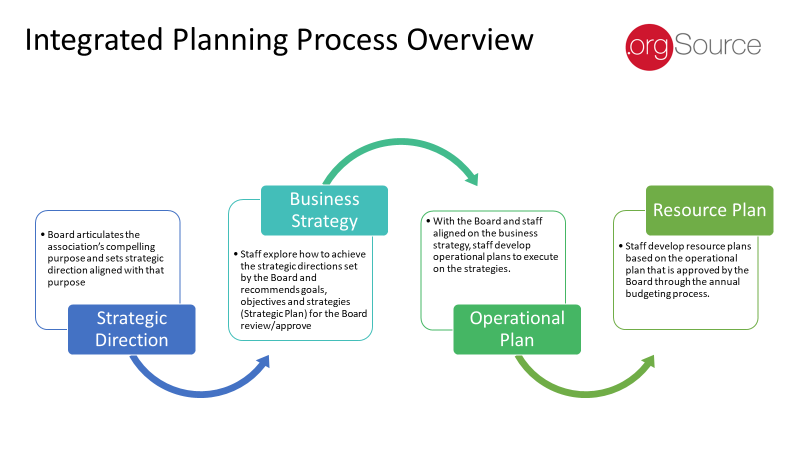Turning a Tanker into a Yacht: 6 Tips for More Effective Association Governance

Associations aren’t known for their ability to easily change course. The benefits of organizational agility have gained traction over the last few years, but most groups haven’t taken the concept further than lip service. Associations tend to plow through the bad weather rather than navigate around it. That’s understandable; getting a 2-ton bureaucracy to pivot is a daunting process.
Being nimble isn’t just about shedding layers. Agility is as much a state of mind as it is a dynamic organizational structure. Cultivating the vision to recognize shifts in the business landscape and initiating the decision-making processes to quickly address challenges and seize opportunities, is a cultural change. The last few months have demonstrated the many reasons why being able to do an about-face is critical. Even if your association seems like an unassailable hierarchy, these six shifts in attitude can make governing more effective.
1. Think Like an Entrepreneur
Since well before COVID-19, .orgSource has advocated for associations to better align their business practices with the digital marketplace. The speed of technology creates an environment where change is the only constant. Our research indicates that the same characteristics that help start-up companies to grow and thrive despite uncertainty can also benefit associations learning to manage disruption.
The interviews we conducted for our Association 4.0 books, Positioning for Success in an Era of Disruption and An Entrepreneurial Approach to Risk, Courage, and Transformation, gave us insight into how executives who refuse to color inside the lines are thinking about governance. Many of their recommendations are strategies that you can easily put into practice today.
Garth Jordan, Senior Vice President, Corporate Strategy at the Healthcare Financial Management Association explains his views on taking an entrepreneurial approach like this: “When I began my career, I was constantly building things that didn’t exist before. Whether it was creating a new department, restructuring membership initiatives, or developing products, I was challenging the typical association’s view on risk,” Jordan recalls. “But, even when I was responsible for major revenue streams, I rarely focused on the numbers. I was seeking opportunity. I was confident that if I delivered value by creating the experiences members and business partners wanted, the dollars would follow.”
2. Become a Cyborg
If you read my posts or blogs, then you know that I’m passionate about digital leadership. What I mean when I say, “become a cyborg” is—stop thinking about technology as a tool and consider it the heart of your organization. A healthy digital infrastructure will give your association the power to withstand many different types of market reversal.
The associations that recently switched to a remote work style without missing a beat are the groups that understand how to use their technology. Notice, I didn’t say they have the best technology, I said they know how to use what they have to accomplish goals. There is a difference.
If you are the CEO, then you are also the person who must model this attitude for everyone in your organization. You don’t need a millennial’s dexterous thumbs, but you must understand the importance of data and have the willingness and ability to implement strategies for its successful use.
3. Draw a Line in the Sand

This is more about creating clear boundaries than being confrontational. It is one of the best ways to avoid both conflict and fuzzy decision-making. If you’ve worked in the association community for any length of time, you’ve experienced the clumsy dance between boards and their executive management teams. One person needs to lead, but sometimes the executive director is trying to tango when the board wants to waltz and they end up, at best, stepping on each other’s toes.
My business partner, Kevin Ordonez, made this observation about the complex dynamics of association governance: “CEOs walk a political tightrope. Volunteer leaders may have spent years building the credibility and network to be nominated to the board. A CEO whose fresh perspective diminishes or changes the role they signed on for won’t be in a good place when his or her contract is up for review. In addition, all of the leaders are temporary so there aren’t strong lines of accountability. While the membership could be seen as shareholders, they have no real skin in the game.”
You may not be able to streamline your organization’s governance structure over the next year or even the next several years, but clarifying the appropriate roles for volunteers and paid staff will give your group a pair of running shoes instead of two left feet. Strategic planning is often the area where responsibility becomes especially confused leading to further complications in decision-making down the line.
4. Integrate Strategy

.orgSource recommends an integrated approach to strategy where the board plays the central role of visionary. Instead of addressing the “how to,” they concern themselves with the bigger issue of “why.” They are charged with posing and answering questions like these:
- Why was our organization founded?
- What has changed over time?
- What is changing in our industry?
- What is the future that we want?
- What is the future that we want to avoid?
- What do we need to start asking ourselves now?
After these fundamental issues are identified and outlined, the staff, using their knowledge about available financial and human resources, sets the objectives that will realize the board’s vision.
Identifying business strategy falls to the executive leadership team. The CEO is the hub that turns the wheel. This clear-cut division of responsibility allows for the staff to adjust and fine-tune initiatives as the business environment changes.
Adele Cehrs, CEO and Founder, When + How Agency, had this advice for CEOs who are tentative about rocking the boat: “I hate seeing my friends who are taking CEO jobs be more focused on pleasing the board than on doing what’s best for their association, their staff, and the profession. They imagine that they won’t be employable if they resign or are dismissed. We have to change the culture that celebrates longevity into one that recognizes accomplishment.”
5. Give Creativity Room to Grow

The ability to innovate is essential to survive in the digital economy. To keep up with the pace of change, your organization must be able to evolve. Kevin puts it like this: “New business models are another inevitability that associations must be prepared to explore. The current association governance structure is out of step with an environment that is characterized by instability and the need for constant innovation.”
The question is can you throw open the windows and doors and let the fresh air flow through an old house without kicking up the dust and making it hard for everyone to breathe.
There are many incremental steps that you can take to begin creating an innovative culture and to make a cautious board more comfortable with risk.
Begin by giving your team the permission and the space to be creative. Teri Carden, Co-Founder, 100Reviews, made this recommendation: “The associations that do the best pivoting have changed the way they think. They give the staff more control and the power and luxury to take risks. . . Association jobs are demanding. Just giving employees mental white space can spark invention. Providing the opportunity for staff to learn more about member perspectives and concerns can also be a source of inspiration.”
It’s equally important to give teams permission to experiment and iterate without fear of reprisal if a project doesn’t evolve as planned. And, of course, some budget will also be needed to support new initiatives. Ben Martin, Teri’s partner in life and business, advises: “Associations can consider allocating a portion of their budgets, say 1 percent, to finding new ideas. Most associations have finite staff resources. You have to balance what you ask employees to do against their core responsibilities.” Martin notes that there are multiple ways to slice the innovation pie. “You can allocate a percentage of entrepreneurial time to everyone’s job or hire a few people who are devoted to emerging initiatives.”
6. Be Persistent
Culture doesn’t change overnight. It requires persistent commitment and communication. But by introducing these attitudes and allowing them to take root and grow, you will gradually shed cumbersome layers of governance and start reacting more like a yacht than a tanker.
Read profiles of Garth Jordan, Kevin Ordonez, Adele Cehrs, Teri Carden and Ben Martin in Association 4.0: An Entrepreneurial Approach to Risk, Courage, and Transformation

